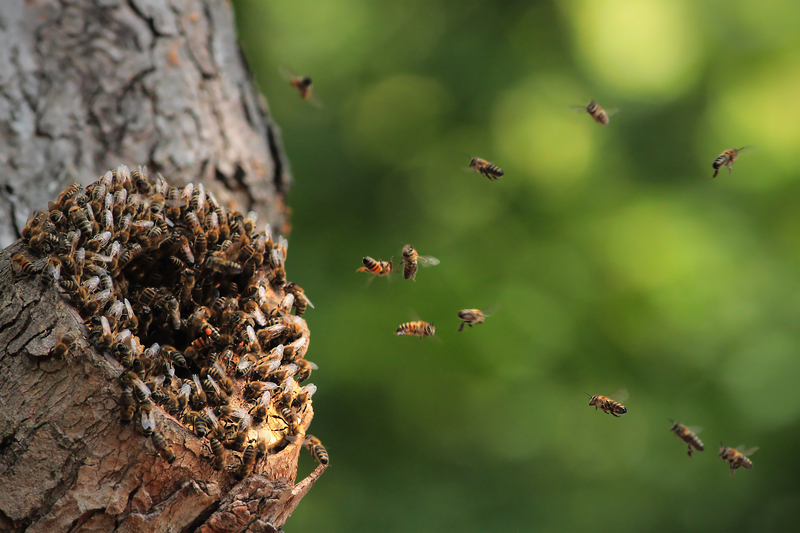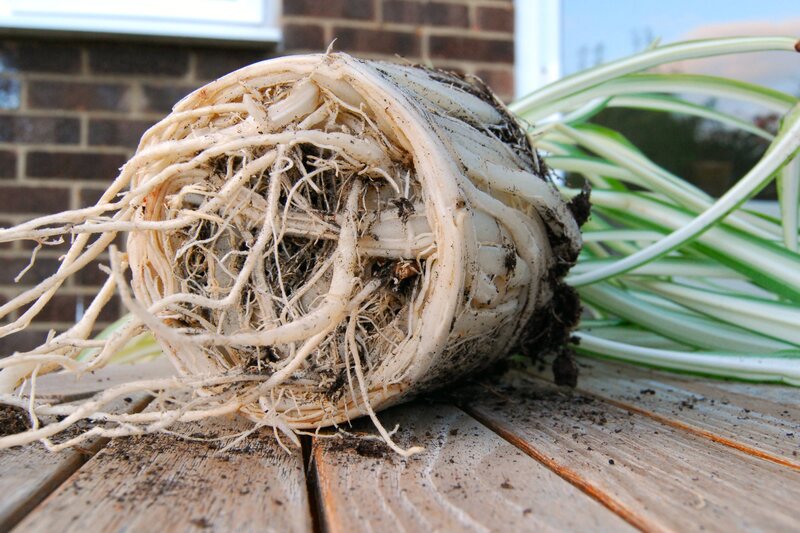Building a Kid-Friendly Garden with Nature's Touch
Posted on 18/06/2025
Building a Kid-Friendly Garden with Nature's Touch: A Comprehensive Guide
Embarking on the journey of creating a kid-friendly garden infused with nature's touch offers a magical experience for both parents and children. Combining the excitement of outdoor play with educational elements and aesthetics, a family-friendly outdoor space fosters creativity, connection, and lifelong appreciation for nature. This in-depth article explores every step to designing, building, and maintaining a child-friendly garden that celebrates nature.

Why Build a Kid-Friendly Garden with a Natural Touch?
A kid-centric garden goes beyond traditional landscaping. It's a living space where children learn, play, and grow in harmony with the environment. Integrating natural elements ensures your garden is not only enjoyable but also sustainable and educational. Here are some of the core benefits:
- Encourages outdoor activity and physical development
- Stimulates imagination and curiosity
- Teaches children about plants, insects, and ecosystems
- Promotes eco-friendly living and awareness
- Strengthens family bonds through shared activities
Key Principles of a Nature-Inspired, Child-Safe Garden
Before breaking ground, it's crucial to understand what sets a nature-oriented family garden apart. Here are the primary guiding principles:
- Safety--Select non-toxic, child-safe plants and materials, and design the garden with sightlines and safe paths.
- Interactivity--Incorporate opportunities for hands-on involvement, such as digging, planting, and harvesting.
- Natural Play--Opt for play structures and features crafted from natural materials, blending into the landscape.
- Accessibility--Ensure that garden elements are reachable and usable by children of various ages and abilities.
- Ecological Harmony--Use native plants and habitat features that welcome pollinators, birds, and beneficial insects.
Planning Your Kid-Friendly Garden with Nature's Touch
The best nature-inspired children's gardens begin with thoughtful planning. Here's how to set the stage for your outdoor adventure.
Assessing Space and Sunlight
- Observe your yard throughout the day to note sunny, shady, and damp areas.
- Identify existing trees, shrubs, and other permanent features to incorporate or work around.
- Allocate space for distinct zones: active play, discovery, relaxation, and edible gardening.
Involving Children in the Process
- Ask for their input on favorite colors, types of flowers, or garden creatures they'd love to attract.
- Let children help with simple tasks such as sketching layout ideas or making a wishlist.
- Give kids their own dedicated space, such as a small raised bed or container.
Choosing a Child-Safe Location
- Keep gardens visible from the house for easy supervision.
- Avoid proximity to hazards like driveways, ponds (unless safety fencing/protection is in place), or thorns/prickly plants.
- Ensure the garden's layout allows easy movement and clear lines of sight.
Designing a Nature-Based Play Garden
A well-designed garden offers layers of engaging features for children to experience. Blend playfulness and natural beauty with these elements:
Incorporate Natural Play Structures
- Willow or bamboo teepees for shaded hideaways, reading, or imaginative play.
- Log or stone stepping paths that challenge balance and coordination.
- Sand or mud kitchens using recycled wood and real kitchenware for sensory activities.
- Tree stumps turned into fairy rings, seats, or obstacle courses.
- Balance beams or climbing mounds shaped from earth and covered with grass or groundcover plants.
Engaging Plantings for Young Gardeners
Choose plants and features that are safe, interesting, and easy for small hands to explore:- Sunflowers--Tall, cheerful, and easy to grow.
- Sensory plants like lamb's ear, lavender, mint, and nasturtiums for touch and aroma.
- Edible crops such as peas, cherry tomatoes, strawberries, and carrots.
- Butterfly and bee-attracting flowers like zinnias, coneflowers, and milkweed.
- Herb spirals or small kitchen gardens for culinary exploration.
Water and Wildlife Features
- Birdbaths or shallow water dishes for birds to drink and bathe in.
- Mini wildlife ponds with gently sloping sides for safety (always supervise young children around water).
- Bug hotels, bee houses, or log piles to shelter beneficial insects.
- Nest boxes for birds, bats or hedgehogs.
Building a Kid-Friendly Garden Step by Step
Step 1: Prepare the Site
- Clear away debris, weeds, and any hazardous materials.
- Test soil for fertility and drainage; amend as needed with compost or organic matter.
- Plan paths with mulch, bark, or stepping stones for safe movement.
Step 2: Outline Zones and Install Structures
- Mark out space for each garden feature or play area.
- Build raised beds, install teepees or other play structures, and create garden borders from natural materials.
- Lay out wildlife-friendly areas with native shrubs, wildflower patches, or log piles.
Step 3: Choose and Plant Child-Friendly Vegetation
- Pick plants suited to your climate and soil conditions.
- Group by sun or shade requirements for optimal health and growth.
- Label plants, or use fun signs to help children learn names and properties.
Step 4: Add Finishing Touches
- Install seating, hammocks, or picnic areas for family enjoyment.
- Decorate with painted rocks, wind chimes, or simple sculptures created by kids.
- Plan for shade using fast-growing trees, trellises, or shade sails if natural tree cover is limited.
Maintaining a Kid-Centric, Nature-Empowered Garden
Caring for your nature-based children's garden should be a shared, rewarding process. Encourage kids to participate in these tasks:
- Watering--Provide child-sized watering cans or hoses with gentle spray attachments.
- Weeding and mulching--Teach the difference between weeds and desirable plants. Use mulch to suppress weeds and lock in moisture.
- Seasonal planting--Start seeds in spring, plant bulbs in fall, and harvest produce together.
- Wildlife observation--Keep journals or observation charts of visiting birds, insects, and other garden creatures.
- Composting--Set up a small compost bin and involve children in the recycling of kitchen and garden waste.
Encouraging Safe Exploration
- Regularly inspect for sharp objects, toxic plants, or garden hazards.
- Supervise water play or activities near wildlife features.
- Teach respectful wildlife and plant interactions: "Look gently, don't pick unless you're sure."
Ideas for All Ages: Tailoring Your Nature Garden
Toddler Activities
- Planting bean seeds in cups or small pots.
- Filling buckets with pebbles, water, or leaves.
- Looking for ladybugs or worms.
- Painting rocks for garden decoration.
Older Children's Engagement
- Designing and mapping out garden beds.
- Building bug hotels or bird feeders from recycled materials.
- Harvesting, washing, and preparing garden produce in simple family recipes.
- Organizing mini "science investigations" -- measuring plant growth, rain collection, or soil temperature.
Eco-Friendly Materials and Methods
Make your nature-inspired kid garden sustainable with these approaches:
- Use untreated, FSC-certified wood or bamboo for structures.
- Repurpose old containers, pallets, or tires for planters and features.
- Choose organic fertilizers and pest control methods.
- Install a rain barrel for water conservation.
- Encourage biodiversity with native flowers and mixed plantings.
Common Questions about Building a Nature-Based Kid-Friendly Garden
Which plants should I avoid in a kids' garden?
Avoid plants that are toxic or have irritant sap, such as foxglove, oleander, datura, castor beans, autumn crocus, and lily-of-the-valley. Research each species before planting, and teach children never to eat plants unless they are identified as edible.
How can I attract beneficial insects and birds?
Choose native flowers with accessible nectar, like echinacea and milkweed, and provide sources of water and shelter such as birdhouses and bug hotels. Avoid using chemical pesticides, which can disrupt the ecosystem.
What's the best way to create garden boundaries?
Natural options include woven willow fencing, living hedges, or log/stone borders. These blend with the landscape and encourage wildlife, while also establishing clear zones for play and planting.
How do I make the garden accessible for children with different abilities?
Include wide, level pathways for mobility devices, raised beds for easier reach, and sensory plants for children who experience the world differently. Consult with occupational therapists for personalized suggestions if needed.

Inspiration: Featured Kid-Friendly Garden Ideas
- Fairy Gardens--Hidden houses, miniature trails, and tiny accessories nestled among ferns and edible plants.
- Sundial or Time Gardens--Planting flowers that bloom at different times of day or year, helping kids learn about nature's cycles.
- Storybook Paths--Create winding trails with painted stone markers and spaces for storytime or puppet shows.
- Pollinator Patches--Sections devoted entirely to butterfly, bee, and hummingbird-attracting flowers.
- Herb Mazes--Low-growing rosemary, thyme, or oregano planted in spiral patterns for wandering and sniffing.
Conclusion: Growing Memories with a Nature-Inspired Kid's Garden
Building a kid-friendly garden with nature's touch is an investment in joy, family, and the environment. By blending safe, interactive play with natural beauty and sustainability, you're cultivating not just plants but childhood memories and future nature stewards. Whether your space is large or small, a balcony or a backyard, using elements of creativity, ecology, and child-led design delivers a space where children can explore, create, and thrive--naturally.
Ready to start your own nature-inspired family oasis? Involve the kids, embrace the mess, and let nature guide the way for a garden filled with wonder, learning, and play.

